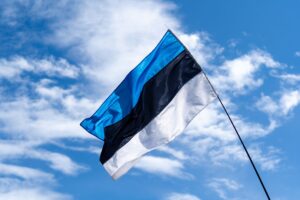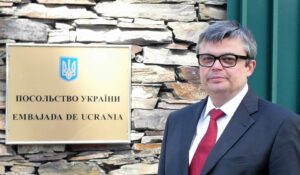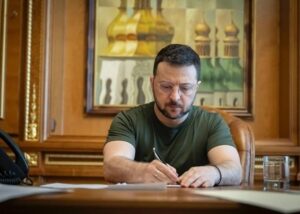
Ukrainian President Volodymyr Zelensky has signed Decree No. 521/2025 appointing Volodymyr Boiechko as Ambassador Extraordinary and Plenipotentiary of Ukraine to the Republic of Estonia.
Boiechko replaced Maksym Kononenko, who was dismissed by decree No. 509/2025. Prior to this appointment, Boiechko worked in the central office of the Ministry of Foreign Affairs and had experience in diplomatic service in EU countries and international organizations.
He specializes in European integration, regional security, and bilateral diplomacy. Ukraine and Estonia established diplomatic relations on January 4, 1992, after Estonia recognized Ukraine’s independence on August 26, 1991.
The Embassy of Ukraine in Tallinn was officially opened in 1992. Since then, the two countries have maintained active political, economic, and cultural ties. Estonia is one of Ukraine’s most consistent supporters in the EU and NATO, providing comprehensive assistance, including humanitarian, military, and digital aid.

The National Bank of Ukraine (NBU) has applied to PJSC IC “Euroins Ukraine” a measure of influence in the form of a written warning for violation of certain requirements of legislation and regulatory documents, the NBU website reports.
Such a decision was made by the Committee for Supervision and Regulation of Non-Banking Financial Services Markets on July 21, 2025, based on the results of a scheduled inspection conducted by the Inspection Department of the NBU.
During the inspection was revealed, in particular, the violation of certain requirements established by the law “On Insurance”, the provisions of the NBU on the secrecy of insurance, on the peculiarities of the conclusion of insurance contracts with consumers, on the authorization of financial service providers and the conditions of their activities in the provision of financial services.
The information emphasizes that IC “Euroins Ukraine” is obliged to eliminate violations until September 22, 2025.
IC “Euroins Ukraine” is a universal insurance company. It has been working in the Ukrainian market since 1992. It is a part of Bulgarian insurance group Euroins, one of the largest independent insurance groups in the countries of Central, Eastern and South-Eastern Europe.

Decree No. 532/2025 appointed Yulia Sokolovska as Ambassador Extraordinary and Plenipotentiary of Ukraine to Spain and Permanent Representative to the World Tourism Organization.
Sokolovska is a former Minister of Social Policy of Ukraine, head of the Ukrainian Defense Industry, and a specialist in the development of the tourism industry. Diplomatic relations with Spain were established in 1992.

The President has signed Decree No. 528/2025, appointing Sergiy Pogoreltsev Ambassador Extraordinary and Plenipotentiary of Ukraine to Mexico (including accreditation in Panama, Belize, Guatemala and Costa Rica).
Pogoreltsev is a career diplomat who has represented Ukraine in Spain, Andorra and the World Tourism Organization since 2020. Diplomatic relations between Ukraine and Mexico were established in 1992.

In the first six months of 2025, NovaPay customers made 205 million transfers, which is 6% more than in the first six months of 2024.
“The total volume of transactions through the system reached UAH 172 billion, which is 26% more than last year,” the company said in a press release on Tuesday.
According to NovaPay CEO Andriy Kryvoshapko, the company’s total direct investment in the first half of 2025 amounted to UAH 230 million, and the volume of taxes for this period increased by 12% compared to the first half of 2024 – up to UAH 765 million.
NovaPay is an international financial service that is part of the NOVA group of companies (Nova Poshta). The company, which employs 13,000 people, serves customers both online and in more than 3,600 Nova Poshta branches.
According to the NBU, its share in the remittance market was 22.7%.
The company was the first non-bank institution in Ukraine to receive an extended license from the NBU, which allows it to open accounts and issue payment cards.

President of Ukraine Volodymyr Zelenskyy has signed Decree No. 524/2025 appointing Yuriy Lutovinov Ambassador Extraordinary and Plenipotentiary of Ukraine to Japan.
Mr. Lutovinov is a career diplomat who has headed the Department for Euro-Atlantic Integration in the Office of the President since 2023 and previously served as Minister Counselor at the Ukrainian Embassy in Tokyo from 2015-2021. He is fluent in Japanese and has a deep understanding of the country, a skill that Zelenskyy considers important for strengthening Ukraine-Japan relations.
Ukraine opened an embassy in Japan in 1995 (officially opened on March 23), and diplomatic ties were established in 1992.